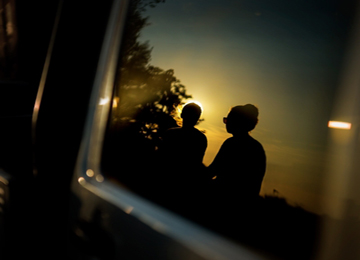
Blog
The
Art
of
Suffering
By Maria Fee
I said to my soul, be still, and wait without hope
For hope would be hope for the wrong thing; wait without love
For love would be love of the wrong thing; there is yet faith
But the faith and the love and the hope are all in the waiting.
Wait without thought, for you are not ready for thought:
So the darkness shall be the light, and the stillness the dancing.
T.S. Eliot, Second Quartet, East Coker, III
Suffering loosens the belief we are in control. When all we undertake falls apart and God seems to have gone on vacation, distress discerns an action that can be accomplish; that of waiting. What accompanies an artist’s wait? We create in hope. It is this aspect of art that reflects Christ’s redeeming work in the world allowing us to render every act of creativity as a sign of hope. Art reaches for the eternal despite our society’s refusal of such categories. As Christians we understand this hope as the beauty of redemption through the salvific works of Christ.
Edward Farley in Faith and Beauty maintains beauty is a manifestation of Christ’s redemptive work. Redemption allows us to uphold what is deemed valueless. Here, the darkness becomes light, the cast off is repurposed. Artists have the ability to take what is broken then reconstitute and employ it towards art. For Farley it is this transformative action that constitutes beauty. “Redemption reaches and reshapes into new freedoms all the ways in which the human being is infected by sin” (Faith and Beauty, 93).
John Dillenberger goes further and suggests difficult art needs to exist. He relates how the “literary and the visual are… affirmations in their negations; indeed, they negate in order to affirm” (A Theology of Artistic Sensibilities, 224). Artist make plain what needs to be—what should be, what can be. Ultimately, it is hope that drives the impulse of art making for it seeks to grasp Jesus’ work of redemption and transformation. Whether we are believers or not we all long for renovation. The nature of transformation, therefore, must fall under the Christian artist’s purview. In our own work we accept the waiting and the mysterious chaos of our lives then proceed to shape, arrange, and re-form it. Jeremy Begbie encouragingly reminds us, “In Christ, all that is ugly and subversive in the cosmos has been purified, beautified and fulfilled. Therein lies the promise for the transformation of all things” (Voicing Creation’s Praise, 175).
Redemption does not negate or ignore the ravages of sin but restores all things. Jesus’ transformative power goes further to redirect and transforms our inordinate desires. It is in the waiting where our love, hope, and faith finally reaches out for the Triune God. Barbara Brown Taylor speaks about this in terms of disillusionment. “Disillusionment,” she writes, “is the loss of illusion—about ourselves, about the world, about God—and while it is almost always painful, it is not a bad thing to lose the lies we have mistaken for the truth” (The Preaching Life, 8). It is in darkness we begin to see, feel, know. While waiting for God we offer him the pain, suffering and the waiting, which in turn, makes our work his.
Wait—for the darkness shall be light,
